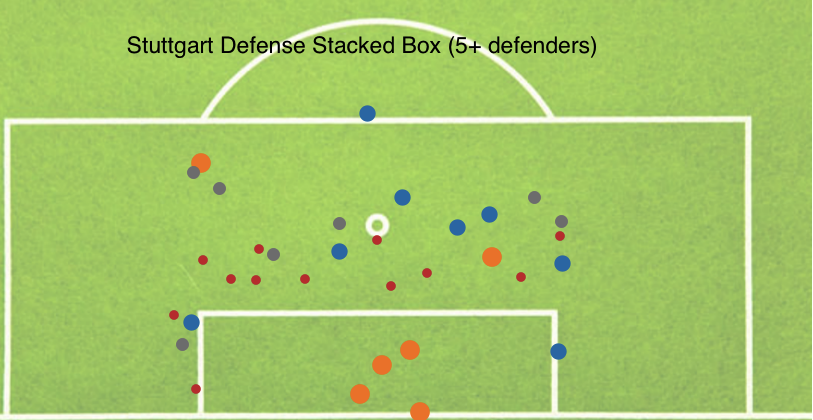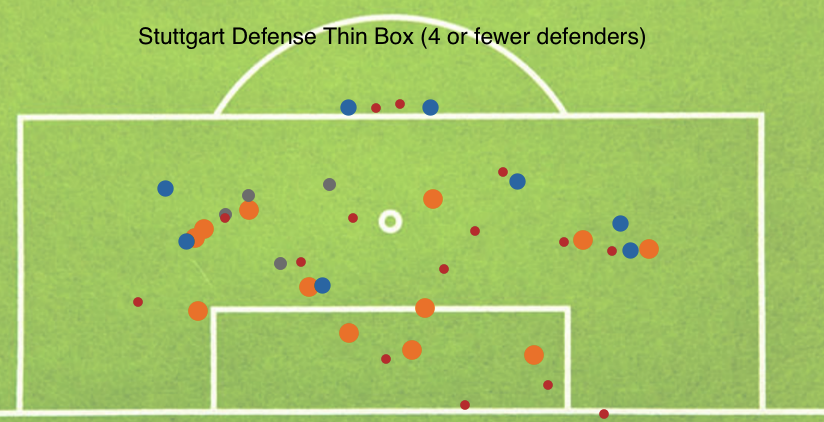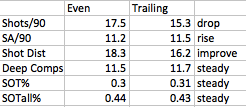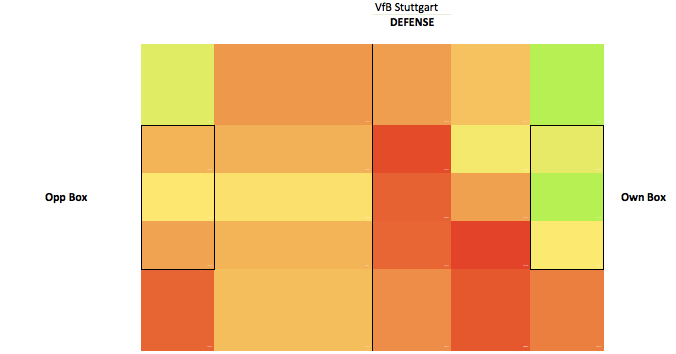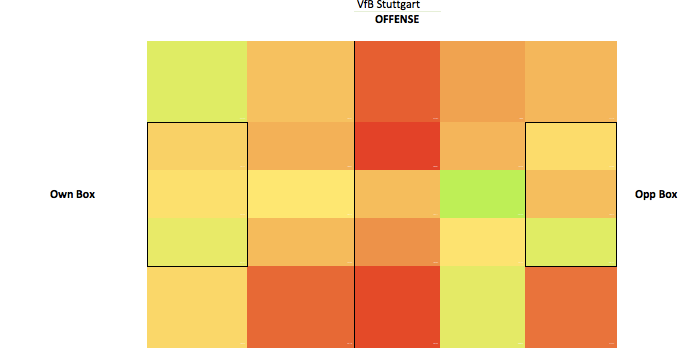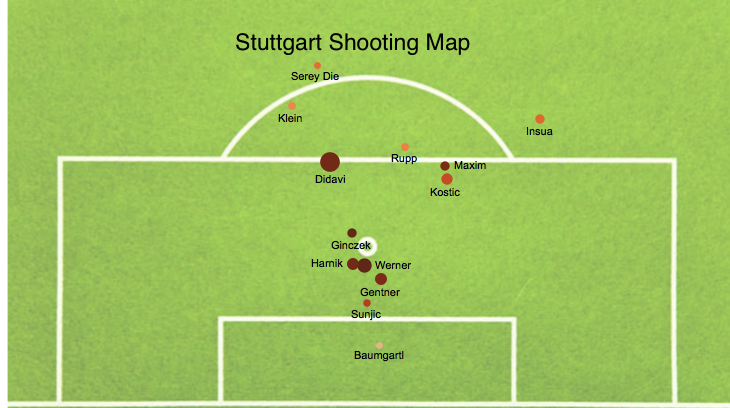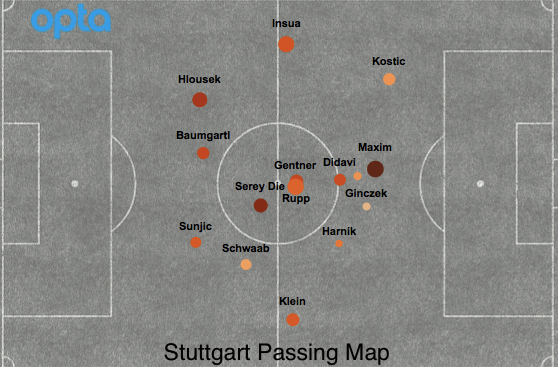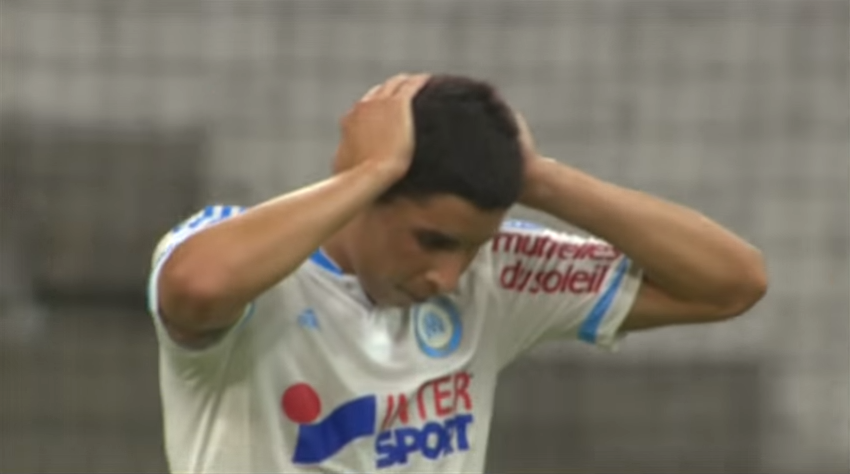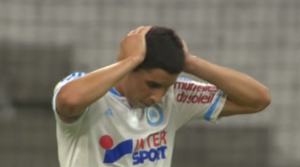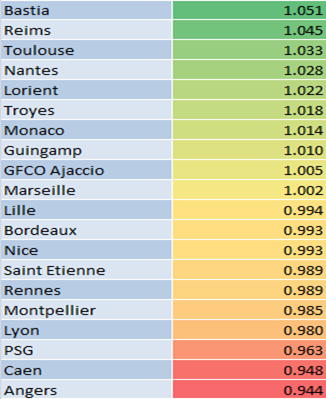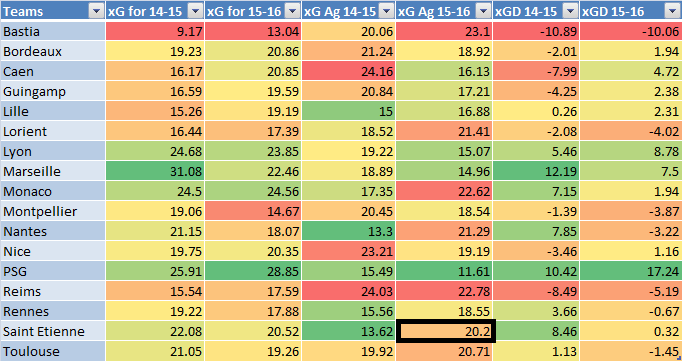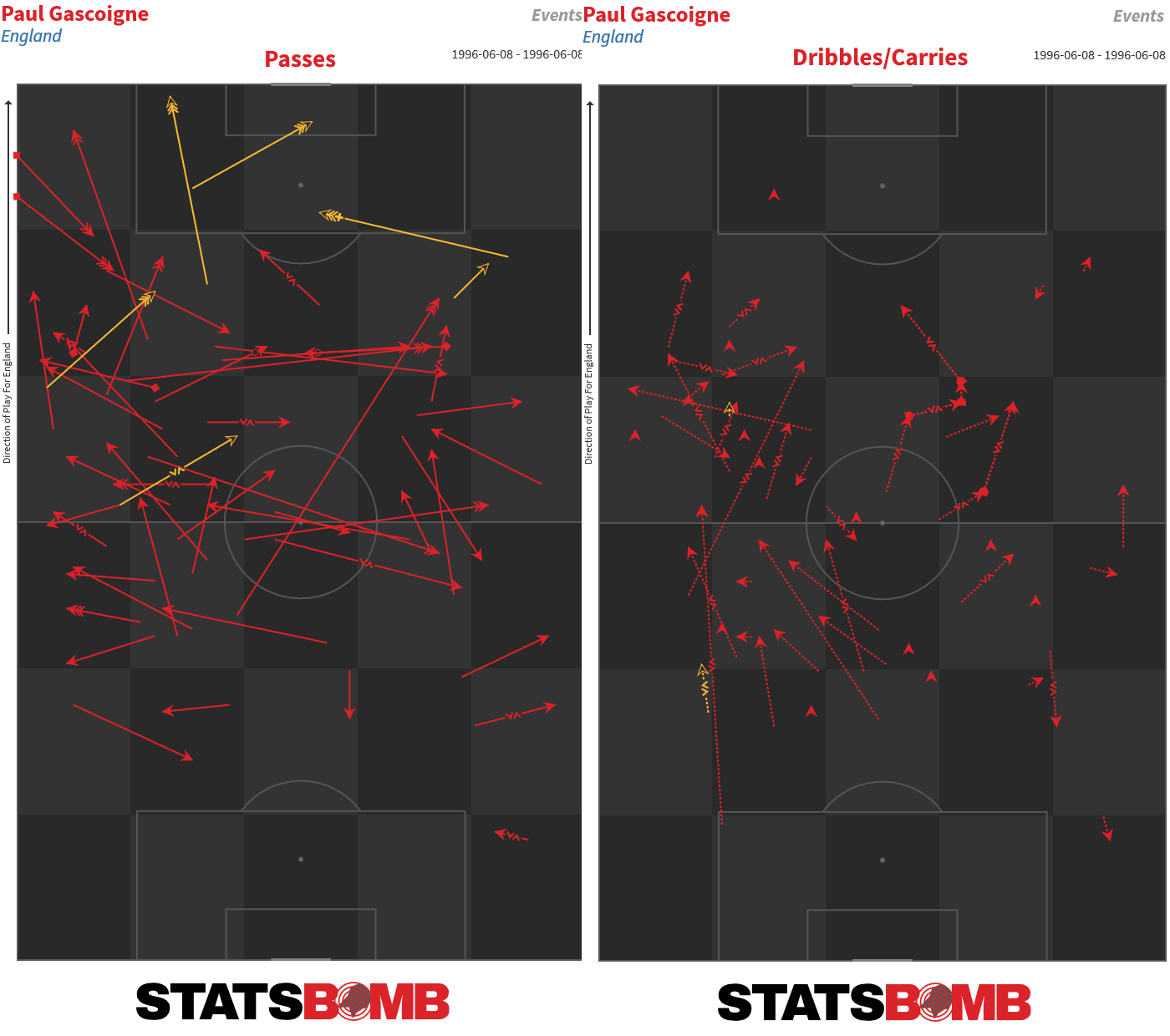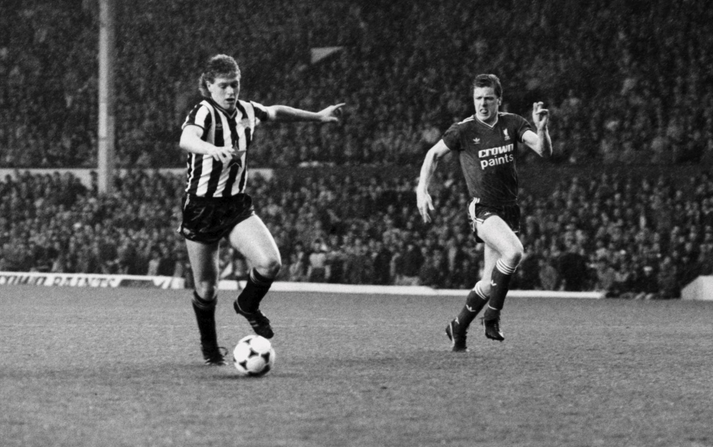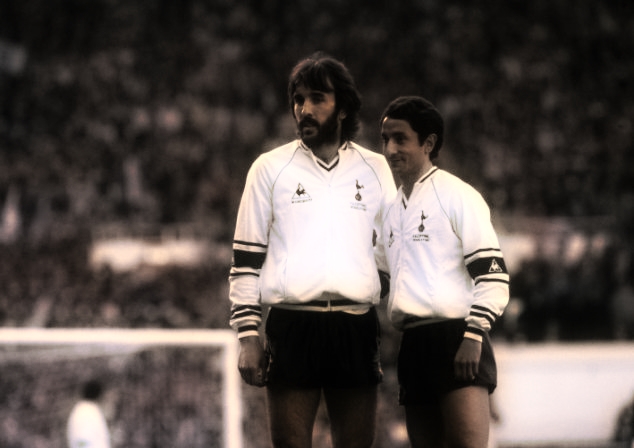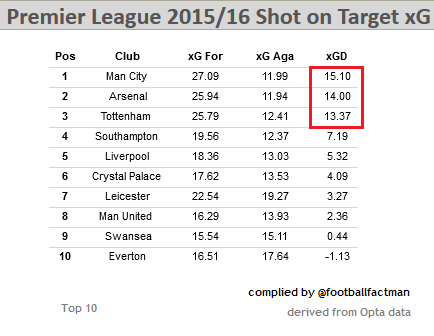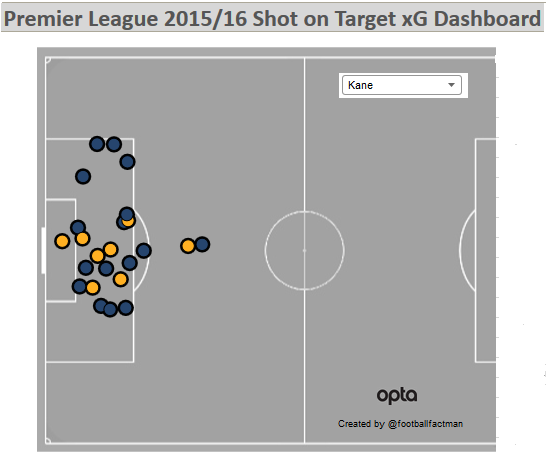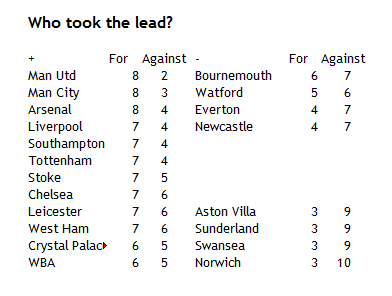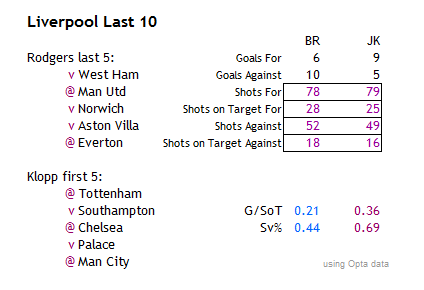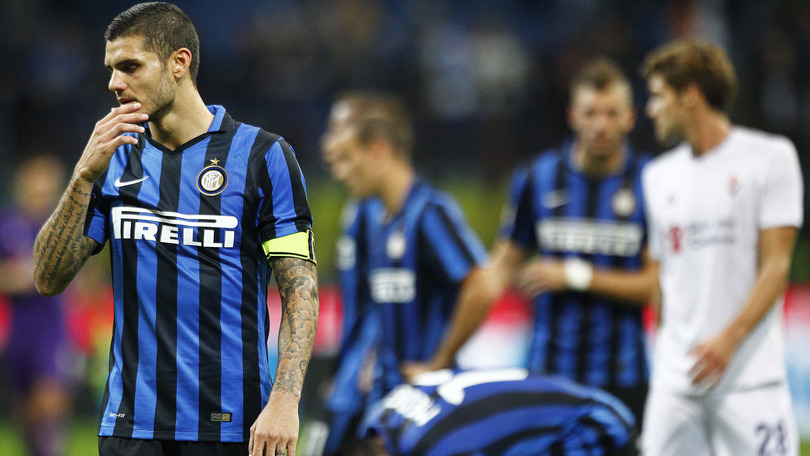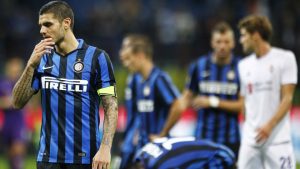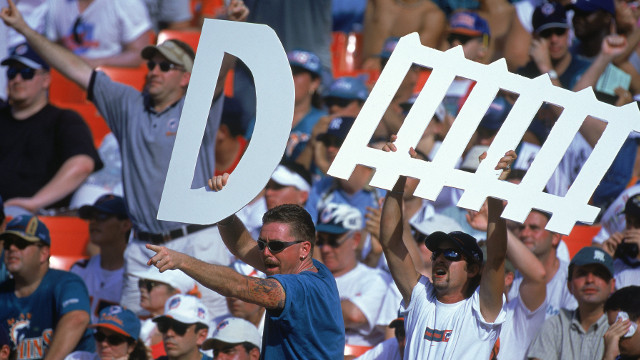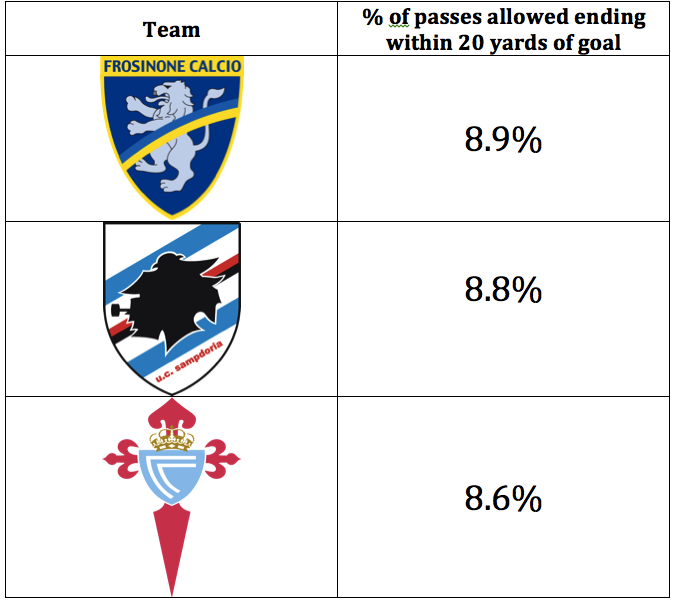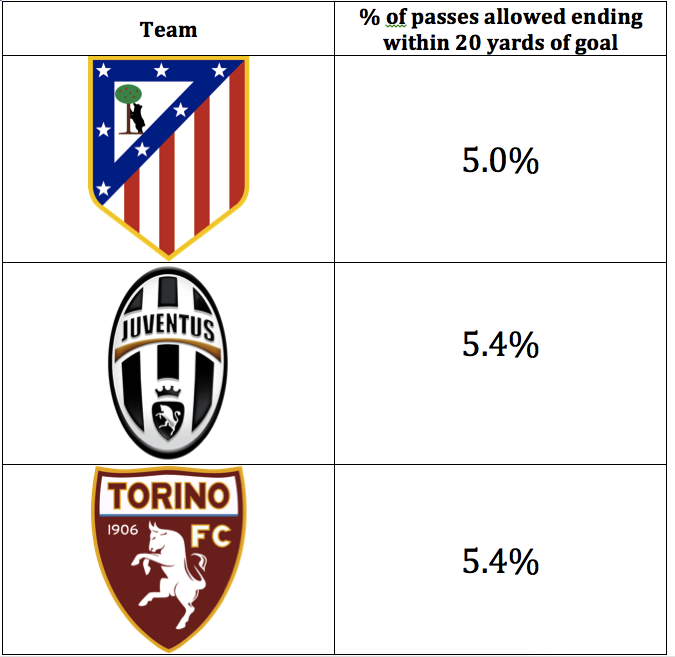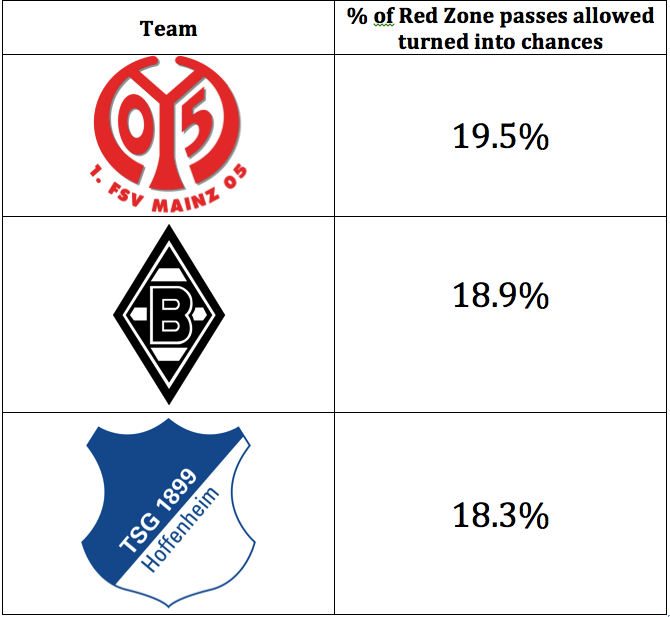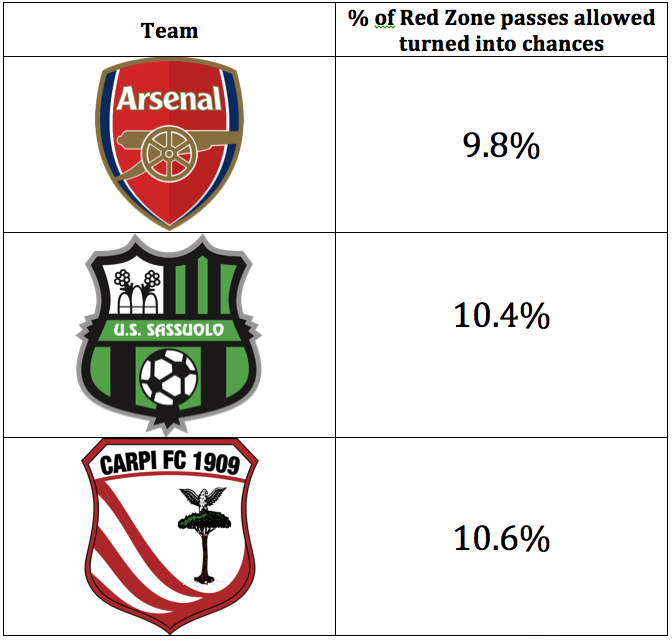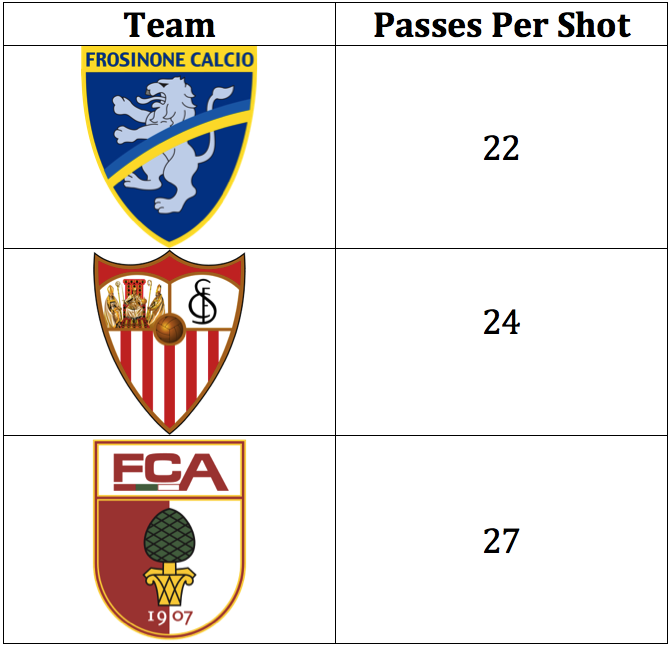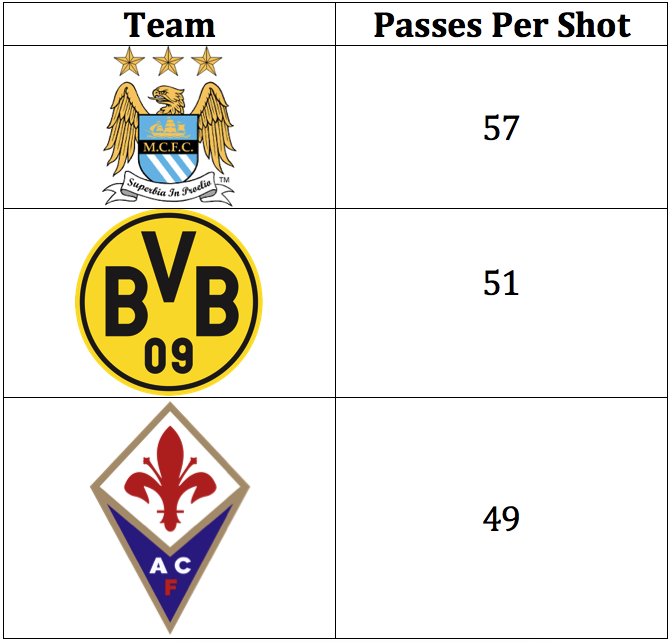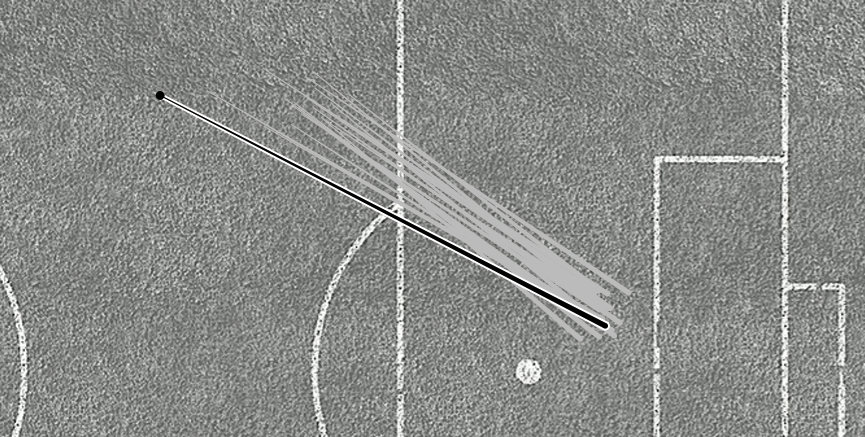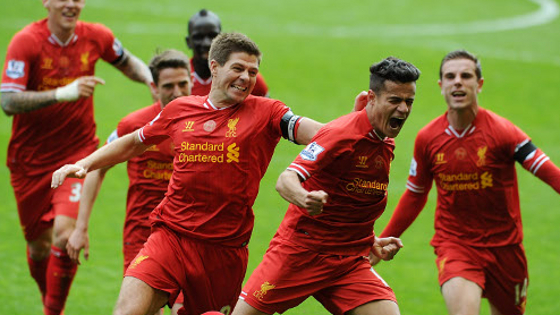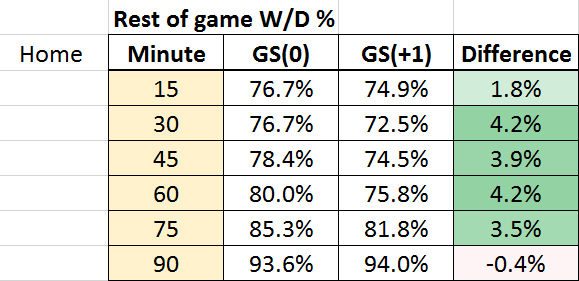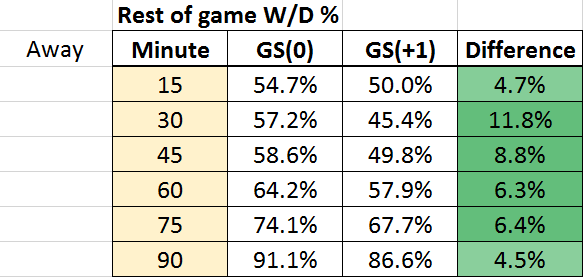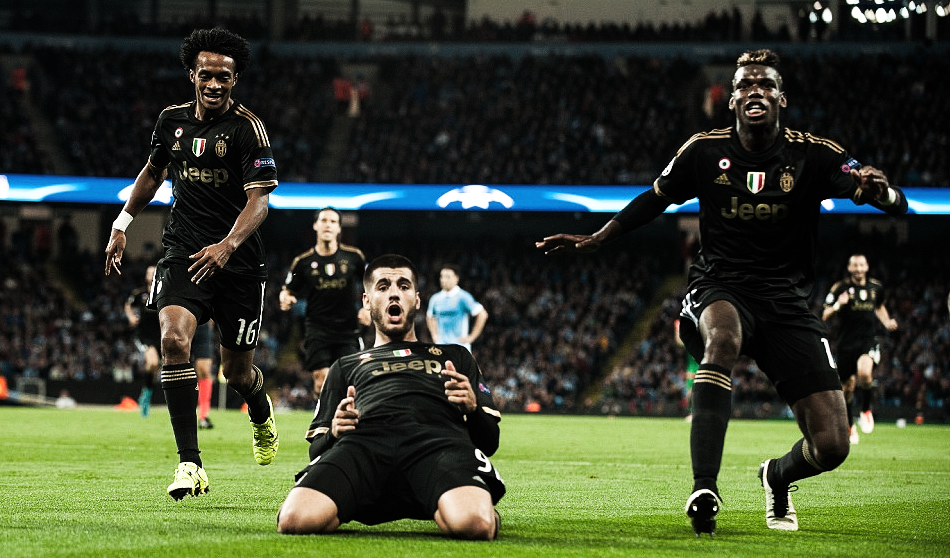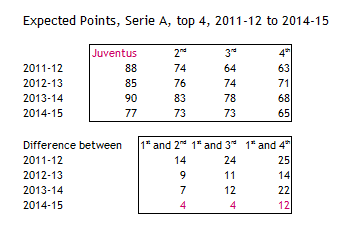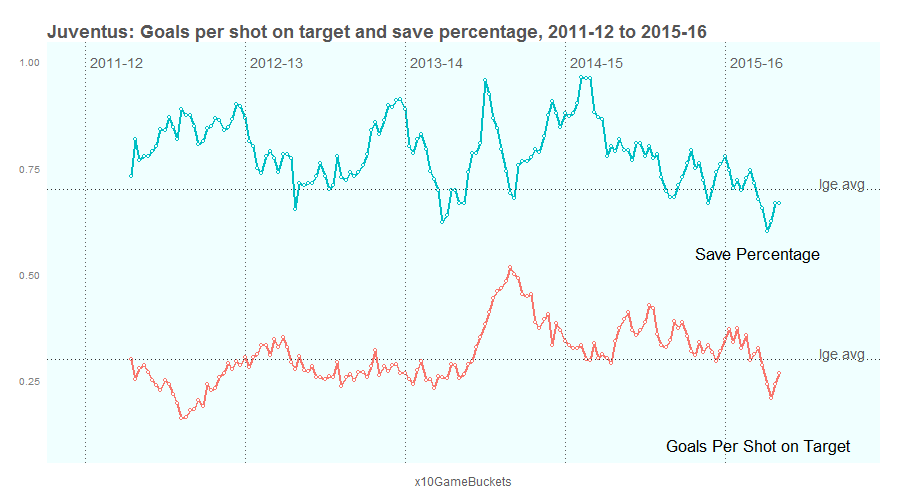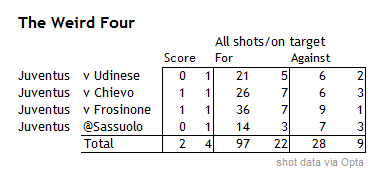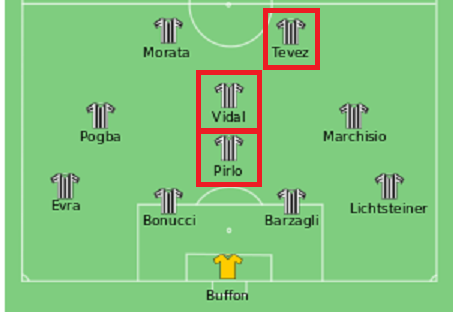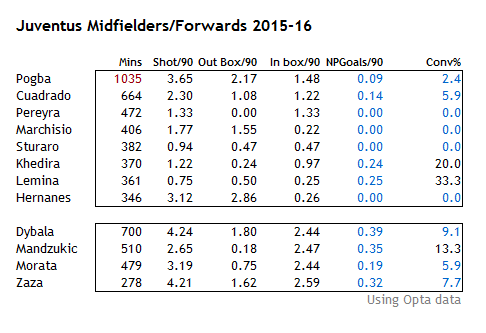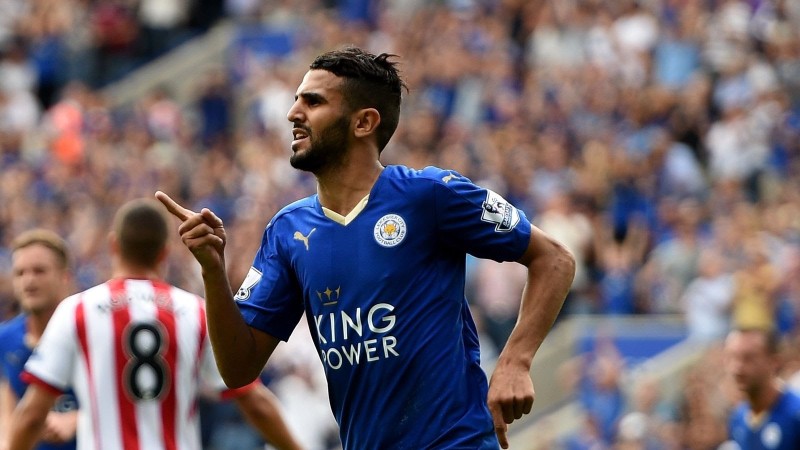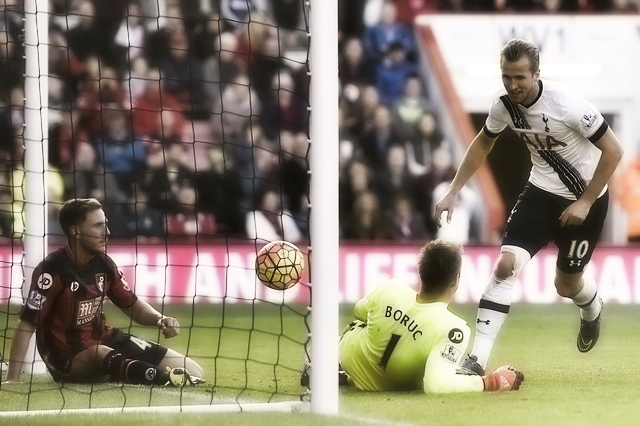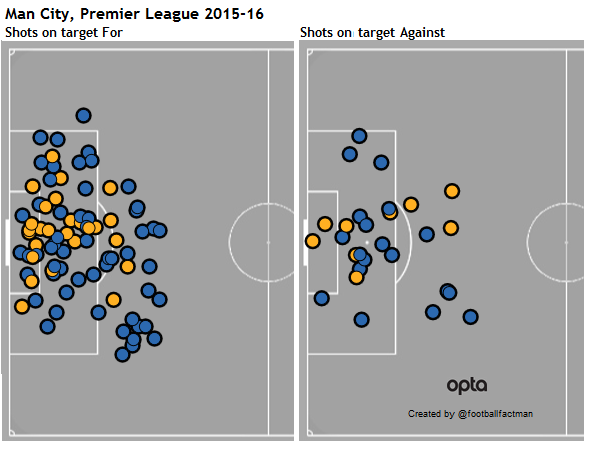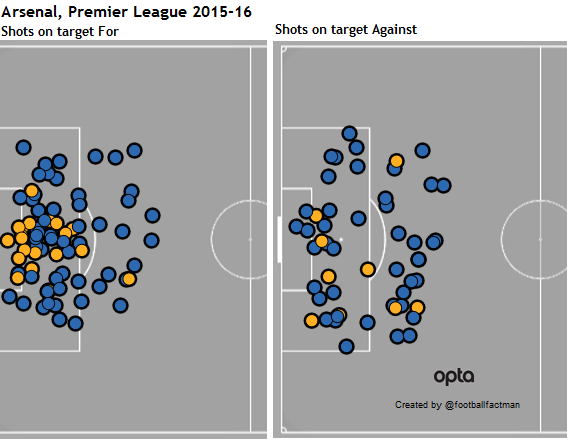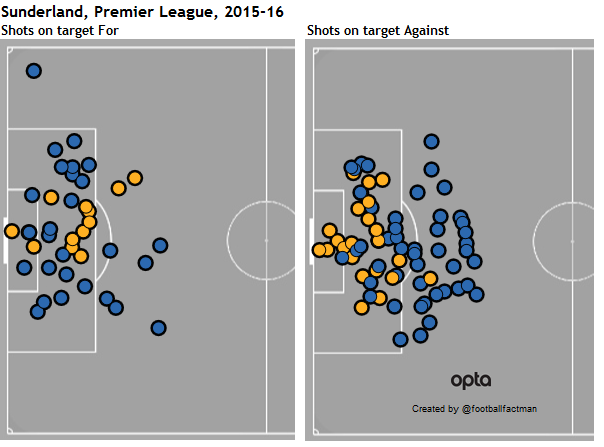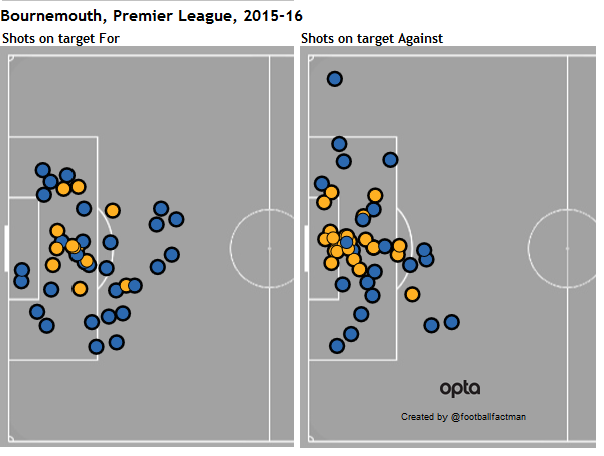 Losing at Anfield is hardly going to increase the pressure on Garry Monk as much as losing to Norwich did. However the two games had an identical feature; on each occasion Swansea managed eight shots, none of which required the opposition keeper to make a save. With a key function of creating goals being an ability to invite the keeper to stop the ball, these numbers make grim reading and are a low watermark in what increasingly looks like an attacking drought. Swansea flew out of the blocks this year with good results and performances against teams that, with hindsight, had vulnerabilities: Chelsea, Sunderland and Newcastle, then a sneaky traditional win against Man Utd. Since then though, they have only once exceeded a league average shot total (14 against Stoke) and haven't managed to exceed the same for shots on target (4.4) at all:
Losing at Anfield is hardly going to increase the pressure on Garry Monk as much as losing to Norwich did. However the two games had an identical feature; on each occasion Swansea managed eight shots, none of which required the opposition keeper to make a save. With a key function of creating goals being an ability to invite the keeper to stop the ball, these numbers make grim reading and are a low watermark in what increasingly looks like an attacking drought. Swansea flew out of the blocks this year with good results and performances against teams that, with hindsight, had vulnerabilities: Chelsea, Sunderland and Newcastle, then a sneaky traditional win against Man Utd. Since then though, they have only once exceeded a league average shot total (14 against Stoke) and haven't managed to exceed the same for shots on target (4.4) at all: 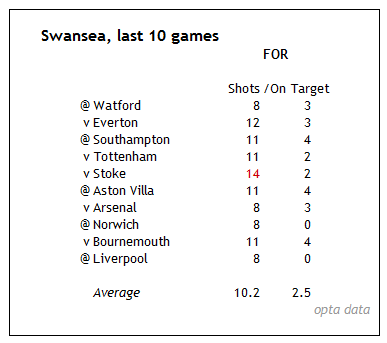 These are distinctly moderate totals against a variety of opposition and fascinating in their consistency. In contrast their defensive numbers have been more erratic without being cumulatively bad. Swansea are a reasonably low event team (5th fewest) but their general shot ratios are okay and peg them as a slightly below average team, albeit one that is going through a rough patch. A significant driver is in their ~8% shot conversion which ranks them 19th with only Villa below. There's room for improvement as there is in their 67% save percentage, a couple of clips down on league average. The upshot of all this is that Swansea are projecting to be a slightly below average Premier League team. The factors that they have the largest degree of control over and that represent their true quality, largely related to their shot volumes, tell us this. The factors that are far more prone to fluctuation and random effects, like the rate in which the shots are going in, tell us they have been on a downslope but there is little reason to presume that this is a long term structural issue. So why is Monk currently trading at a similar price as Steve McClaren in the "Next Manager to Leave" markets? Using a version of Team Rating, we can take a look at a points expectation for the years that Swansea have been in the league and compare it to their actual points gained:
These are distinctly moderate totals against a variety of opposition and fascinating in their consistency. In contrast their defensive numbers have been more erratic without being cumulatively bad. Swansea are a reasonably low event team (5th fewest) but their general shot ratios are okay and peg them as a slightly below average team, albeit one that is going through a rough patch. A significant driver is in their ~8% shot conversion which ranks them 19th with only Villa below. There's room for improvement as there is in their 67% save percentage, a couple of clips down on league average. The upshot of all this is that Swansea are projecting to be a slightly below average Premier League team. The factors that they have the largest degree of control over and that represent their true quality, largely related to their shot volumes, tell us this. The factors that are far more prone to fluctuation and random effects, like the rate in which the shots are going in, tell us they have been on a downslope but there is little reason to presume that this is a long term structural issue. So why is Monk currently trading at a similar price as Steve McClaren in the "Next Manager to Leave" markets? Using a version of Team Rating, we can take a look at a points expectation for the years that Swansea have been in the league and compare it to their actual points gained: 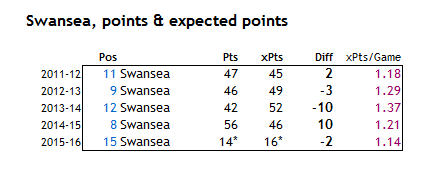 What this shows is that Swansea's actual performance levels are broadly in line with other seasons, or at least close. Last season was a big overachievement both in points and position and some kind of reversion to a prior level was a plausible prediction. Where they previously landed at the top of an expectation, they are currently residing at the bottom. Simple random variation is likely to cause a team to oscillate between a maximum and minimum level, neither of which is likely to exceed last year or cause any threat of relegation. They have been a 45-52 point team since arriving in the league and it is probable that they will again land in a zone close to that projection- anywhere from 8th to 14th. Should Monk's job be under threat? Probably not, but it depends on his internal benchmark and the measures that are being analysed within. There are three reasonable scenarios that could be in play:
What this shows is that Swansea's actual performance levels are broadly in line with other seasons, or at least close. Last season was a big overachievement both in points and position and some kind of reversion to a prior level was a plausible prediction. Where they previously landed at the top of an expectation, they are currently residing at the bottom. Simple random variation is likely to cause a team to oscillate between a maximum and minimum level, neither of which is likely to exceed last year or cause any threat of relegation. They have been a 45-52 point team since arriving in the league and it is probable that they will again land in a zone close to that projection- anywhere from 8th to 14th. Should Monk's job be under threat? Probably not, but it depends on his internal benchmark and the measures that are being analysed within. There are three reasonable scenarios that could be in play:
- If Swansea's board is taking a traditional view of performance by merely viewing the league table, then three wins in 14 games is exactly the kind of run that creates panic and causes chairmen to act rashly. In this scenario, he's in trouble.
- If the board is aware of the wider but relatively simple analysis (or similar) that has been done here, then there is little reason to have any concern with overall long term performance. Monk hasn't effectively improved his team but nor are they in real decline. However:
- If within his remit he has been tasked with tangibly improving the performance level of his team, then he has had nearly two years in the job and has not achieved that. His future job security in this scenario would be under threat.
Of course there may be further non-performance issues around the club, as Dan Barnett discussed in a recent blog. The 8th place albatross that hangs around Monk's neck is largely irrelevant when defending or condemning him. Overperformance in one season followed by underperformance is a dangerous recipe for a manager's prospects, but in themselves, the random fluctuations of a team's outputs don't tell the full story. As Mark Taylor showed here it can take an extremely long time for a league position to be accurately representative and Garry Monk might well remind his chairman that at his next meeting. Newcastle Representing an entirely different kind of consistency we find Newcastle. Finishing off their tough early schedule by allowing Man City to annihilate them allowed room to breathe and it could be reasonably expected that recent weeks might have found a superior level of performance. It hasn't really happened. The adrenalin high of the 6-2 victory against Norwich allowed hope to emerge briefly before they predictably choked the derby match, had the better of a 0-0 against Stoke, fluked a victory against Bournemouth and got successively crushed by Leicester and Palace. We can talk of this lunacy as consistency in the wake of John Carver's unforgettable "Mr Unlucky" run at the back end of last year, a plight which mirrored Pardew's pitiful late run overseen the season before. What saved those two teams was their early season performances and goal getting, something that has been largely absent this time round. Having picked up 23 and 20 points respectively in these seasons on the way to final totals of 49 and 39, the ten points accrued thus far look an both an extremely thin cushion and arguably generous, especially when factored against truly dismal shot numbers. Nothing even suggests that they have been particularly unlucky and it's painful to recall that they were second highest net spenders in the league in the summer. Quite what they got for their investment remains to be seen. In contrast to Monk, Steve McClaren's possible retention seems a dicey prospect: "they were bad, they spent money, now they are possibly worse" is a recipe that necessarily upends a sword for somebody to fall on, and where the board have been slow to act in the past, the financial carrot of Premier League survival may well prove decisive. Sadly for Newcastle, famed firefighters Pulis and Allardyce are engaged elsewhere so McClaren may end up getting the time he desires to somehow pick up their game. The new target is unlikely to be mid table though, to be the best of the worst may be as high as they can aim for now. Reasons not to buy Aaron Lennon volume one The thought process is clear. The team needs an option on the flanks and a bit of league experience wouldn't go amiss. Looking at available players, a name appeals. The guy comes in on loan, he plays a few times and does okay. Why not make a permanent deal? At his best the player was top class, an international with speed and hard work, a threat. The player isn't old, he's got a few years left in him. This guy could work well in the squad! The key here is expectation. I'm picking on Aaron Lennon here, but it could quite easily be Ibrahim Afellay or Morgan Amalfitano or any number of "could do a job" type signings down the years. Often players that have a pedigree in the league or were formerly at a large club. Their fee may not be huge but they will want the wages of an established professional. Specifically what i'm looking at here is the role of a wide player. Most times, at least part of the armoury of a wide player is an ability to dribble the ball. So, if that is what you are expecting from your older purchase, you might be disappointed: 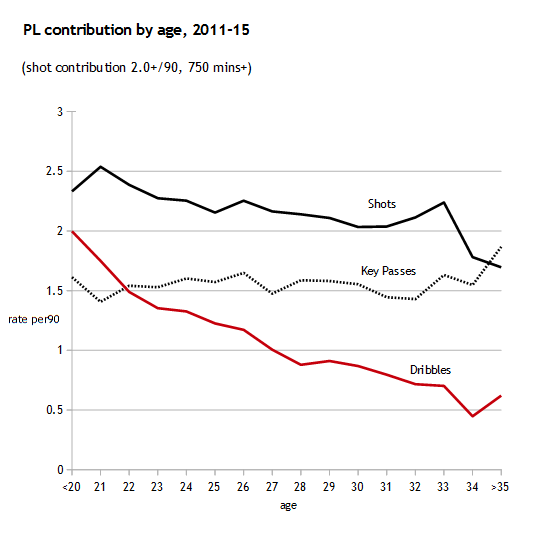 To ensure that we are looking at players that contribute to a team's attack the cutoff point has been set at a shot contribution of two or more per 90 minutes and the sample is most stable between 22 and 31 years of age. These trends persists however you slice the data in relation to shot contribution or time played. Compare the possible difference in output between a 22 year old on a three year contract and the same for a 27 year old. If a club wants players to run with the ball it is likely to be cheaper and more efficient to employ one or two young prospects and allow them the chance to exist within your squad–with little potential downside–than to go out and purchase a typical older professional "squad man". There is also a smaller but nonetheless noticeable trend within shots. Of course, these are just but three of many factors to consider. If you want a clue as to how efficiently your club is using the transfer market, look at the ages of the players they are signing. While a top player can perform strongly into their thirties, an average player may well have started a decline long before. Again which is preferable? A 22 year old with value at the end of their contract and possibly their best years at the club or an older player, possibly hindered by prior injuries or in decline eating away at the budget, rarely playing and with zero long term resale value.
To ensure that we are looking at players that contribute to a team's attack the cutoff point has been set at a shot contribution of two or more per 90 minutes and the sample is most stable between 22 and 31 years of age. These trends persists however you slice the data in relation to shot contribution or time played. Compare the possible difference in output between a 22 year old on a three year contract and the same for a 27 year old. If a club wants players to run with the ball it is likely to be cheaper and more efficient to employ one or two young prospects and allow them the chance to exist within your squad–with little potential downside–than to go out and purchase a typical older professional "squad man". There is also a smaller but nonetheless noticeable trend within shots. Of course, these are just but three of many factors to consider. If you want a clue as to how efficiently your club is using the transfer market, look at the ages of the players they are signing. While a top player can perform strongly into their thirties, an average player may well have started a decline long before. Again which is preferable? A 22 year old with value at the end of their contract and possibly their best years at the club or an older player, possibly hindered by prior injuries or in decline eating away at the budget, rarely playing and with zero long term resale value. 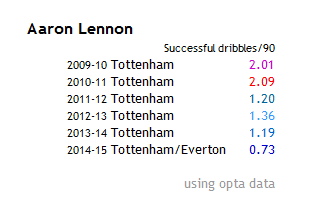 Aaron Lennon has played 202 of 1260 (16%) available minutes this season and has a three year contract taking him through to his 32nd year. Obligatory Tottenham section Another draw for specialists Tottenham. It's amazing to think that nobody told Jose that one point was insufficient for his team prior to kick off. Maybe he's not big on projecting point totals? Season low totals for shots, passing percentage and possession for Chelsea here did little to disguise the intent, though in fairness their general play wasn't so bad until they hit the final third. Such a contrast to both the brilliance (in endeavouring to come back) and ineptitude (conceding five) they showed at the Lane last season. Tottenham, with Mason inexplicably starting ahead of Lamela, continue their long unbeaten run, though the fourth home draw of the season is a habit they must relinquish if they want to contend at the level their numbers imply they are capable of doing. Liverpool lurk uncomfortably close behind for now, and one can't presume that Arsenal will continue to injure themselves with such regularity or that United won't continue to succeed despite themselves. Not losing is a great habit to get into though. The fanbase are universally happy and after a week in which title talk was mentioned, the more realistic suggestion of a solid crack at the top four has returned. ____________ Thanks for reading!
Aaron Lennon has played 202 of 1260 (16%) available minutes this season and has a three year contract taking him through to his 32nd year. Obligatory Tottenham section Another draw for specialists Tottenham. It's amazing to think that nobody told Jose that one point was insufficient for his team prior to kick off. Maybe he's not big on projecting point totals? Season low totals for shots, passing percentage and possession for Chelsea here did little to disguise the intent, though in fairness their general play wasn't so bad until they hit the final third. Such a contrast to both the brilliance (in endeavouring to come back) and ineptitude (conceding five) they showed at the Lane last season. Tottenham, with Mason inexplicably starting ahead of Lamela, continue their long unbeaten run, though the fourth home draw of the season is a habit they must relinquish if they want to contend at the level their numbers imply they are capable of doing. Liverpool lurk uncomfortably close behind for now, and one can't presume that Arsenal will continue to injure themselves with such regularity or that United won't continue to succeed despite themselves. Not losing is a great habit to get into though. The fanbase are universally happy and after a week in which title talk was mentioned, the more realistic suggestion of a solid crack at the top four has returned. ____________ Thanks for reading!
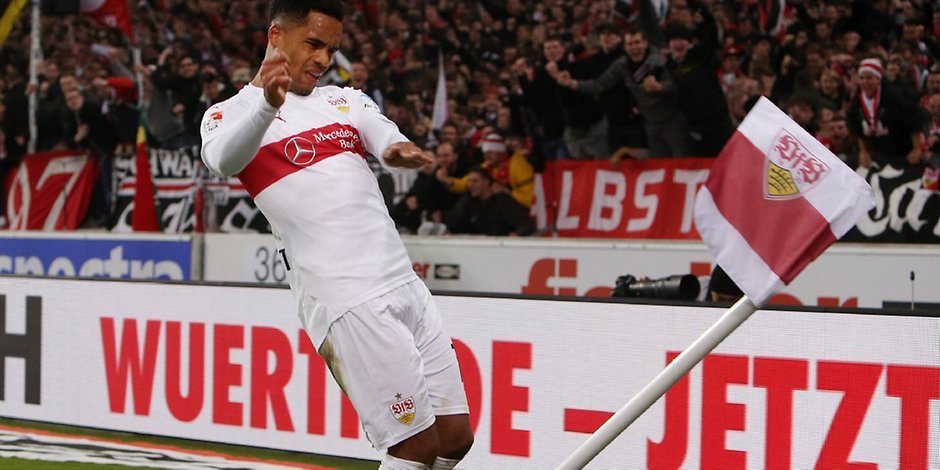
 Stuttgart have been quite the puzzle in the early season. After a few games their underlying stats seemed to indicate a massive jump from last years team that just missed relegation, the only bother was a few unlucky losses. Now we are nearing the break and they are still in the bottom three and still have the underlying numbers that back a very good team. A quick look at several different metrics shows the pieces that don't seem to fit:
Stuttgart have been quite the puzzle in the early season. After a few games their underlying stats seemed to indicate a massive jump from last years team that just missed relegation, the only bother was a few unlucky losses. Now we are nearing the break and they are still in the bottom three and still have the underlying numbers that back a very good team. A quick look at several different metrics shows the pieces that don't seem to fit: 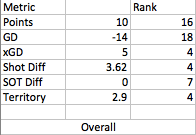
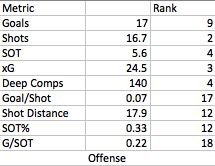
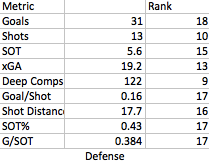
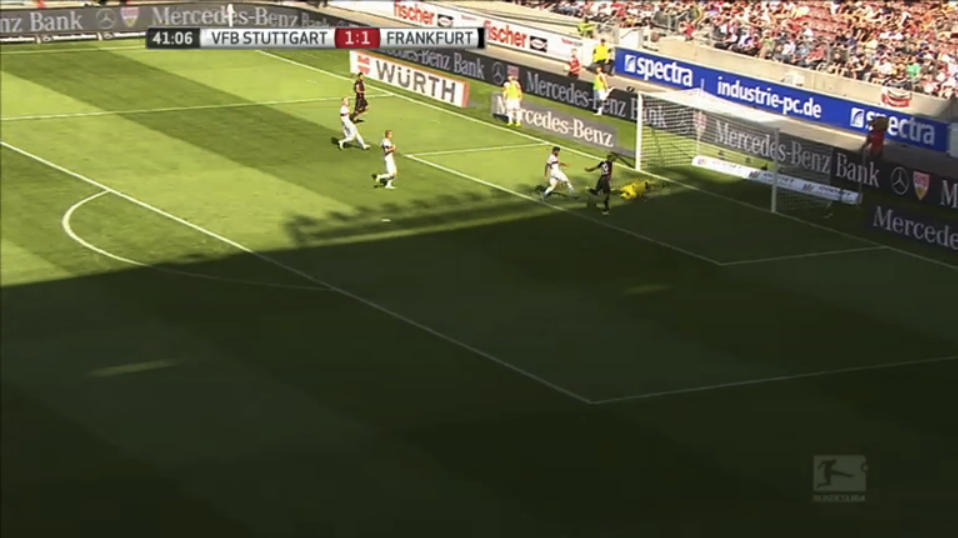
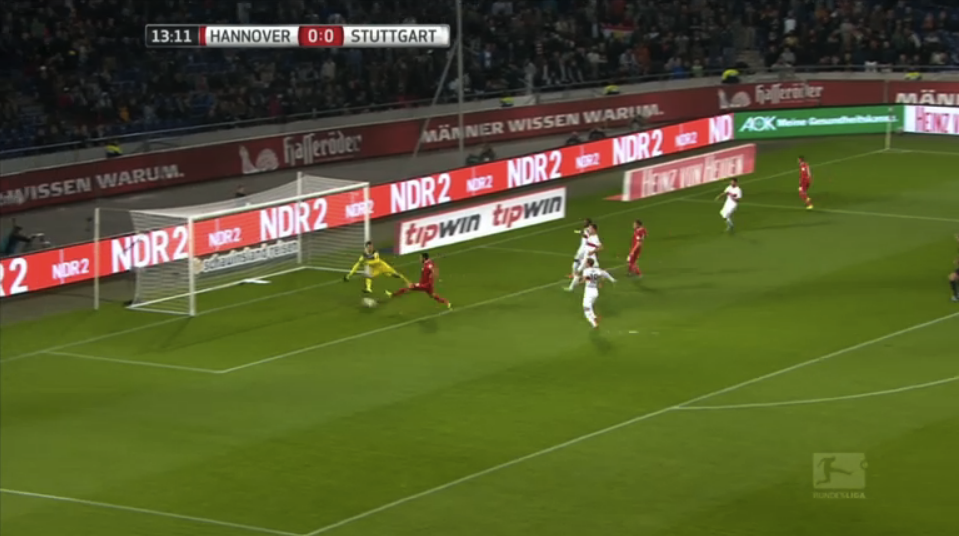
 These are examples and not every single shot, but Stuttgart's close shots have been tougher than their opponents. When their defense is set, they aren't conceding goals at any crazy rate (except for the 3 tap-ins Bayern created) but when they can't get set the goals start flying in. orange=goal, blue=save, gray=block, red=miss.
These are examples and not every single shot, but Stuttgart's close shots have been tougher than their opponents. When their defense is set, they aren't conceding goals at any crazy rate (except for the 3 tap-ins Bayern created) but when they can't get set the goals start flying in. orange=goal, blue=save, gray=block, red=miss. 